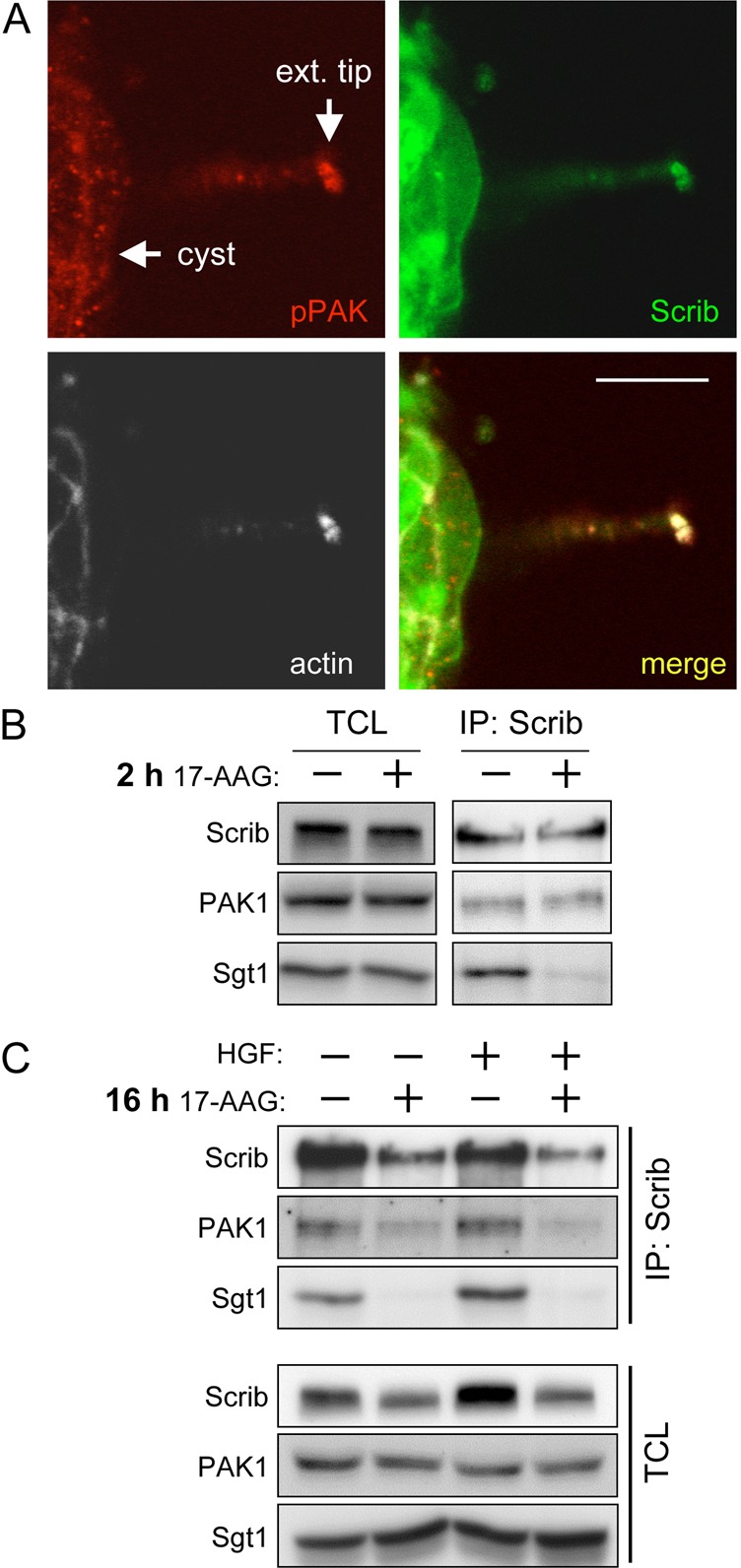Fig. 5.

Pak is a potential effector of Scrib. Inhibition of Sgt–HSP90 reduces total Scrib–PAK complex abundance indirectly through decreased Scrib protein levels. (A) MDCK Venus–Scrib-expressing cysts were treated with HGF for 48 hours. Cysts were then fixed and stained with a pPAK antibody (red) and for actin (white). Arrows denote either the edge of the cyst from which the extension has grown or the tip/end of the extension (ext. tip) where Scrib, pPAK and actin show maximum colocalization. Scale bar: 10 µm. (B) Scrib IPs from cells treated for 2 hours with 0.5 µM 17-AAG and control cells were subjected to SDS-PAGE alongside total cell lysate input samples (TCL) and western blotted for the indicated proteins. Despite similar levels of total protein loading, 0.5 µM 17-AAG treatment reduced the association of Sgt1 with Scrib. Conversely, equal amounts of PAK were found in both 17-AAG-treated and untreated Scrib IPs, suggesting Sgt1–HSP90 is not directly required for the Scrib–PAK association. (C) Scrib IPs of cells treated for 16 hours with 0.5 µM 17-AAG and control cells that were either treated with (+) HGF or left untreated (–) were subjected to SDS-PAGE alongside total cell lysate input samples (TCL) and western blotted for the indicated proteins. 17-AAG treatment reduced Scrib protein levels and the amount of Scrib and PAK that was immunoprecipitated.
